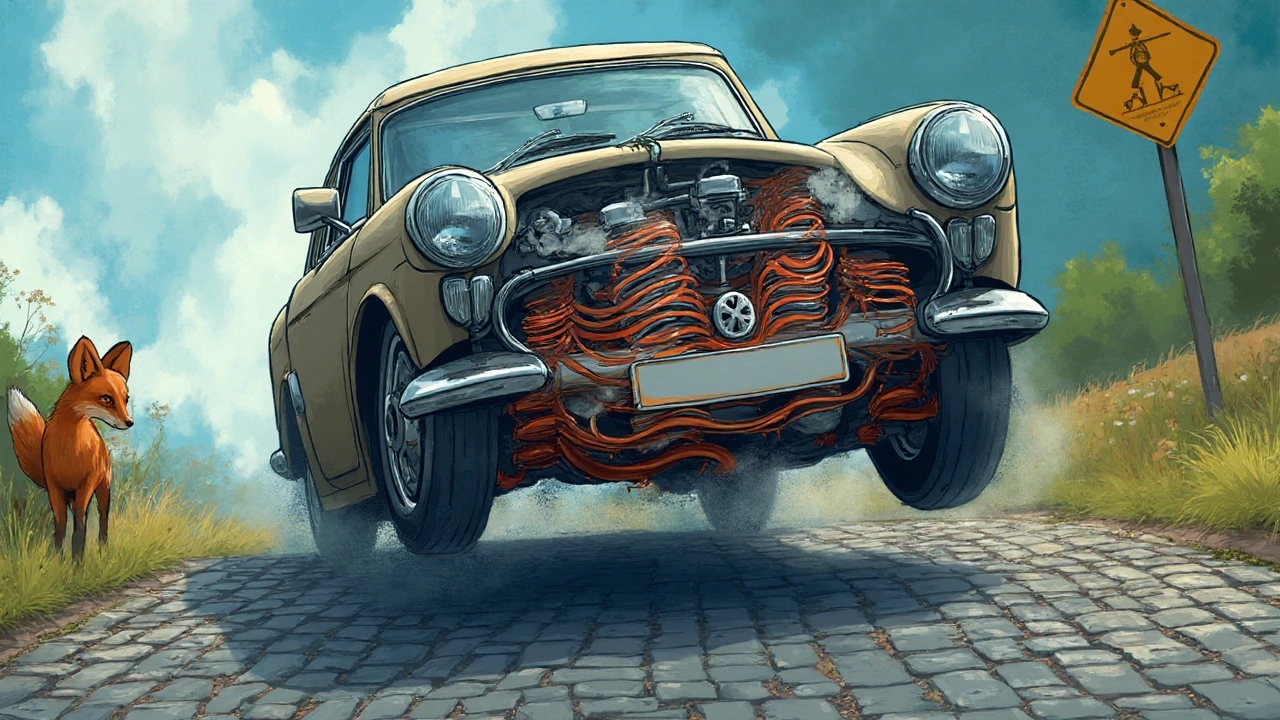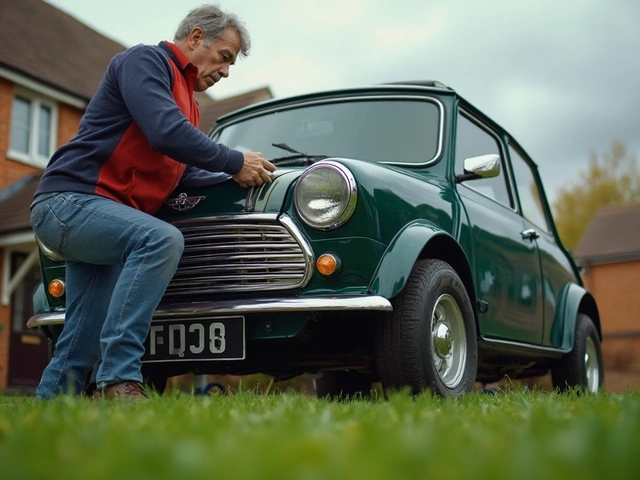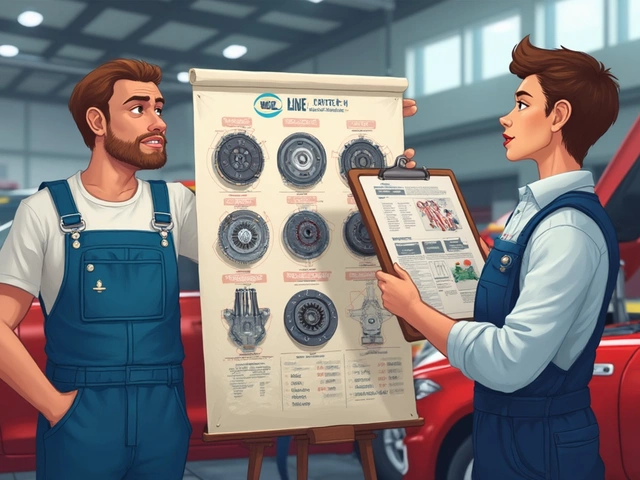If you’ve ever cruised down a bumpy road and heard your car groan, thump, or clunk in protest, you probably wondered if something was wrong beneath the surface. Plenty of people ignore those odd car noises, hoping they’ll vanish. But with suspension problems, those sounds are your car’s way of telling you it needs attention—fast. One in three drivers admits to driving for a month or more with clear warning signs. But suspension issues aren’t just annoying. They directly mess with your safety and your wallet. It’s not just about comfort. Faulty suspension can lead to poor steering, uneven tire wear, and even dangerous accidents if left unchecked.
Noises That Spell Trouble: Recognizing Damaged Suspension Sounds
Your car’s suspension isn’t shy about speaking up when something’s wrong. The challenge is decoding what it’s saying. First, there’s the infamous damaged suspension sound: heavy clunks, sharp knocks, creaks, rattles, squeaks, or even groans when you hit a bump or turn at low speeds. Think of it as your car’s cry for help. Clunking, for example, often means there’s a loose or broken part—like a worn ball joint, busted control arm bushing, or a failing stabilizer link. These are not just random metal sounds. They’re signals of worn or broken pieces that don’t cushion and stabilize your car the way they should.
Bouncing along and you catch a rhythmic thumping noise? That could mean a bad shock absorber, leaking struts, or even a snapped spring. Want to spot low-speed suspension trouble? Listen for a dull thud when you go over speed bumps or potholes. Ever heard a squeaky bed frame noise from the front or rear when you turn? That’s often dry or corroded bushings or ball joints. Metallic scraping or rubbing sounds can mean something is rubbing where it shouldn’t, sometimes after a major suspension failure. It’s surprisingly common in cars older than 10 years, especially ones that weren’t treated to regular maintenance. Even a little extra bounce or sway, paired with noise, points to failing dampers or springs.
Ever drive in the rain and notice a creaking noise gets louder? Water often makes worn bushings and joints complain more. If your car sounds smooth when dry but grows louder on wet days, take that as a big red flag. Some people describe a rattling, almost like marbles in a can, coming from beneath the floorboard or pedals. That points to a seriously worn or broken sway bar link. Hear a strong knock when turning the wheel at low speeds? Check your ball joints and tie rods—these are essential for safe steering. And a worn upper strut mount or top shock mount can sound like a golf ball smacking metal each time you steer or hit a bump. If you catch any of these, don’t just blast the radio (tempting, right?). It’s your car waving a warning flag.
One more tip: suspension noises almost always get louder or change in rhythm when you speed up, slow down, or drive over bumps. That’s your clue the noise is coming from the moving, flexing parts down below—not just some random interior rattle. People will sometimes mistake exhaust rattles or brake noises for suspension issues, but if it gets noisy every time your car goes up, down, or tilts, bet on the suspension.
And here’s something you might not think about: a constant knocking noise, even on smooth roads, can mean a broken spring or a detached component swinging inside the wheel well. This is more than annoying—it’s dangerous. Left alone, suspension problems can cost far more than just an annoying sound. They can wreck your wheels, tires, or steering components. Sometimes, even a hard-to-find sound is the first warning before a suspension part actually fails. Playing the guessing game rarely ends well: listen, inspect, and treat those noises like you would warning lights on your dashboard. Your ride—and your passengers—depend on it.

Why Your Suspension Sounds Matter (And What They’re Trying to Tell You)
Your car’s suspension wasn’t built for silence, but it also shouldn’t be playing a soundtrack on every drive. Every unusual sound is your car’s way of hinting at a bigger story below. For example, a rough creak or groan as you pull into your driveway might signal rubber bushings have worn out or dried up. These bushings help isolate vibrations and soften your ride. Once they go, every movement feels and sounds harsher. On cold mornings, those sounds get louder. Ever notice squeaks fade after driving awhile? That’s because friction heats up the old grease, giving temporary relief. But the problem doesn’t vanish.
If you feel every bump along with a “bang” underneath, your shocks or struts could be done for. These parts act like oil-filled cushions, soaking up every dip and jump in the road. Once the oil or gas leaks out, they bottom out and send the shock straight through your chassis. One in four cars over seven years old are running on at least one bad shock—that’s one reason so many commutes feel like a rollercoaster. People often ignore this, chalking it up to “just an old car,” but the noise means there’s less control the next time you swerve or brake hard.
A clicking or popping noise while turning hints at worn CV joints or ball joints. And yes, you’ll notice steering gets heavier or less precise too. Ignoring this can lead to serious steering issues—there are real stories of wheels wobbling or even falling off when ball joints fail entirely. A rattle over every little road bump, almost like a baby’s toy, means you’re probably dealing with loose sway bar links or bushings. Sway bars keep your car flat on corners—break one and you’ll notice the car rolls uncomfortably when you turn quickly. People with SUVs and pickup trucks see this more often after years of heavy loads or a lot of off-roading.
Those loud banging sounds might not even be coming from what you expect. Sometimes, it’s the top mount of a strut that’s separated, or a coil spring that’s snapped but still mostly in place. That sort of damage usually makes itself known with a “boing” or “clank” sound every time weight shifts to that corner. There’s also a risk of metal-to-metal contact, which eats through rubber pieces and can eventually cause total suspension collapse if ignored. That’s a big deal, especially if it goes out while you’re driving at speed. By the way, the National Highway Traffic Safety Administration has reported hundreds of crashes each year directly linked to ignored suspension and steering failures. “Just a little noise” is almost never just a little noise.
And if the noises suddenly get worse after hitting a massive pothole or curb, don’t brush it off. That’s classic territory for cracked bushings, bent arms, or dented rims messing with suspension geometry. A survey of body shops shows that a whopping 60% of mysterious creaks and clunks are traced to curb damage. Keep an ear out—and remember, those suspension sounds are signals you shouldn’t ignore. The sooner you solve them, the cheaper and safer your ride will be.

How to Track Down Suspension Noises (And What to Do Next)
Figuring out exactly what’s making those creepy car sounds starts with your ears, but sometimes you’ll need a little hands-on checking. First, listen carefully: note where the noise comes from—front or rear, left or right, and if it only pops up when you brake, turn, or hit rough patches. These details help narrow things down. For example, a clunk in the rear on bumps hints at a damaged strut or worn-out rear bushings. Hear a faint rattle in the front every time you roll over a speed bump? Watch out for sway bar links or ball joints.
Try bouncing each corner of your car by pushing down firmly on the fender above each wheel. If it bounces more than once, your shock or strut is likely toast. This old-school trick still works on most cars. Next, crouch down and peek under: look for oil leaks on the shocks or struts, cracked or split bushings, or rusty, broken springs. Even a hint of shiny metal where there should be rubber usually means something’s broken down there. You might notice a wheel sits lower than the others—a telltale sign of a busted spring or collapsed mount. Cars with air suspension sometimes “kneel” on one side when lines leak or the compressor fails, adding even more weird noises.
Another easy check: drive slowly in a parking lot, turning the wheel side to side. If you hear popping, focus on CV joints, tie rods, and upper strut mounts. Creaks during parking lot maneuvers usually mean control arm bushings or ball joints have dried out—listen for them with your window down. Keep in mind that salt, road grit, and winter weather wear suspension parts even faster, especially on older cars without modern corrosion protection. That’s why folks in snowy climates often hear suspension noises years before drivers in dry regions.
- Never skip the test drive. Bring a friend or mechanic if you’re not sure about a noise. Sometimes a second pair of ears makes all the difference.
- If the car pulls sharply to one side, feels unstable, or you see uneven tire wear, combine that with sounds you’ve heard to pinpoint a failing suspension part.
- Grab a flashlight and check the wheel wells for loose or hanging parts after hearing a new noise.
- Ignore the temptation to spray WD-40 on noisy parts. It might quiet things down briefly but won’t solve the issue—worn bushings, joints, and shocks need to be replaced, not lubed.
- Don’t wait until a part actually fails—catching noises early often means a cheap fix (like a bushing) rather than big-dollar repairs (like control arms, struts, or entire assembly swaps).
- Use your senses: look for leaks, feel for loose wheels, and always listen carefully after hitting a pothole.
Busting a suspension myth: it’s not only older, high-mileage cars that get noisy. Brand new cars can have bushing failures or loose sway bar links, especially after a manufacturing defect or a really unlucky pothole hit. And don’t trust the silence. Quiet doesn’t always mean healthy—sometimes, parts can wear so evenly that there’s little sound, but control and tire wear tell the real story. Don’t skip regular maintenance because the car “sounds fine.”
Want to prevent those dreaded suspension noises? Get an annual suspension checkup, keep bushings protected with rubber-safe sprays, and steer clear of potholes and curbs as much as possible. If you do hear something off, jot down when, where, and how it happens. That way, you’re ready to help a mechanic figure it out fast. And the sooner you fix weird car sounds, the longer your ride will stay smooth, safe, and—most importantly for some of us—quiet!




